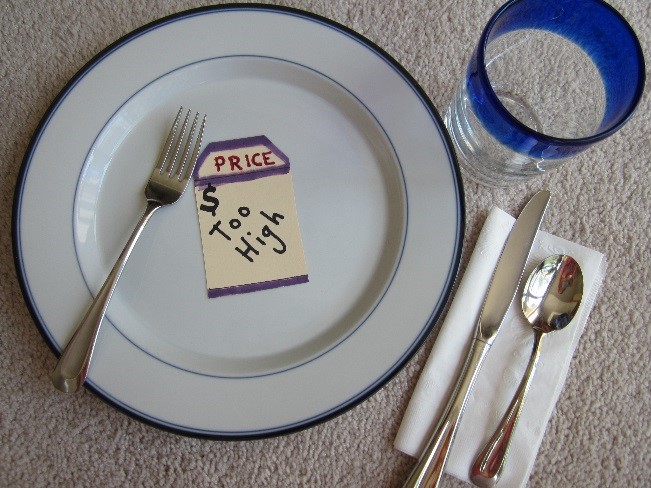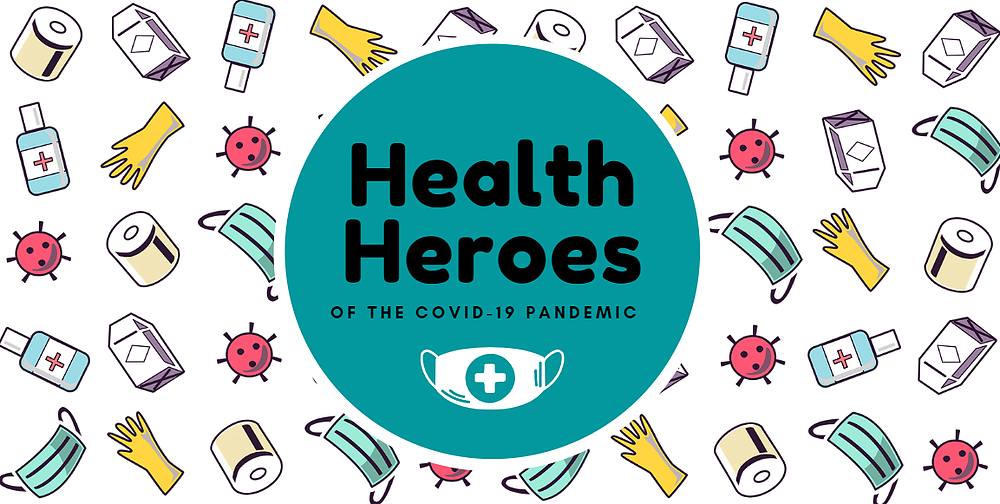Today @ MAND – May 2020
We Missed You in April
March, April and May might be starting to blur together as dietitians and nutritionists take the front line with other healthcare workers to fight COVID-19. We hope everyone has remained safe and healthy during this time and has found sources of hope. Thank you for all you are doing!
Supporting Your Neighbor
By Sierra Parker, RD, LDN, CNSC
Everyone has seen an empty grocery shelf during this COVID-19 pandemic. At first it was thought to be due to purely hoarding and the new craze for sourdough breads. However now more than ever we are seeing the hidden health disparities, food deserts, food system issues, and hunger that had always been an issue in the United States. As dietitians these things impacts our field more than any other profession. Our patients and clients rely on our guidance and expertise to eat well and stay healthy. Thus, we have the obligation to identify food insecurity and act. However, with that state still in a semi-lockdown and shelves still empty, how can we help?

Step back. Food deserts per the United States Department of Agriculture (USDA) are broadly defined by access to affordable and healthy food options. This definition considers distance to a store- 1/2 mile for urban areas and up to 20 miles for rural areas- as well as vehicle accessibility. Unfortunately, these definitions fail to account for the actual type of store, income, race, age and many other factors that affect Americans today. The 2015 data from the USDA flagged 30 percent of residents in Massachusetts as living in a food desert based on low income and low access, measured at 1/2 mile for urban areas and 10 miles for rural areas [1]. This data set did not identify the types of food or stores people could access, so we could suspect some people have access to a Whole Foods but cannot afford to shop or others have access to only a bodega that is a one mile walk away. Inner City in Focus also conducted a study in 2015 that reviewed food affordability versus food accessibility. They found that of the 240 grocery stores in Boston only 0.04 per 1,000 population were available to residents in Roxbury versus 0.11 in Back Bay. Not only that but the cost of a gallon milk cost $0.50 more in Roxbury than Back Bay despite an income gap of $58,000 [2]. In addition, since it is unclear what food is available in a food desert, it is not surprising that food deserts are known to increase the risks of cardiovascular events and other health issues [3]. And all of this was five years ago.
Today, things are changing too quickly with Coronavirus to even know how many of our neighbors are without food, let alone healthy options. The unemployment data as of March 2020 in the state of Massachusetts was 2.9 percent and this doesn’t consider that food costs 18 percent more than the national average [4,5]. With restaurants closed, grocery stores empty and food insecurity a rising issue, dietitians can be a source of hope. This can be by done by spreading information about food resources, supporting local restaurants and farmers, and even volunteering. Take some time this spring to share the joys of nutrition!
Food Resources to Spread:
Direct People to Boston COVID-19 Food Resources
Food for Free- rescuing food and feeding the community
Support Boston Restaurant Workers
10 Ways to Support Local Food Right Now
Eat Healthy with Deliveries from Local Farmers
Volunteer, Support and Refer Clients to Community Servings
Volunteer and Refer Clients to ETHOS
Deliver Food to Families Through the Fresh Box Program
Support About Fresh- getting food to those that need it most
References:
[1] United States Department of Agriculture. (2015). Food Access Research Atlas Data [Data File]. Retrieved from: https://www.ers.usda.gov/data-products/food-access-research-atlas/
[2] “Food Availability versus Food Affordability.” Inner City in Focus. (2015). Accessed 5/8/2020. Retrieved from: https://icic.org/wp-content/uploads/2016/04/ICIC_INFOG_Food_Access_FINAL-1.pdf?x96880
[3] Kelli, H., Kim, J., Tahhan, A., Liu, C., Ko, Y., et al. (2019). “Living in Food Deserts and Adverse Cardiovascular Outcomes in Patients with Cardiovascular Disease.” Journal of the American Heart Association, 8(4). https://doi.org/10.1161/JAHA.118.010694
[4] Department of Unemployment Assistance, Economic Research Department. (2020). Labor Force and Unemployment [Data File]. Accessed 5/8/2020. Retrieved from: https://lmi.dua.eol.mass.gov/LMI/LaborForceAndUnemployment/LURResults?A=01&GA=000025&TF=3&Y=2020&Sopt=Y&Dopt=TEXT
[5] Drennan, C. (2019, May). New Data Shows Costs of Food Highest in Massachusetts Highest in United States. The Greater Boston Food Bank. Accessed 5/8/2020. Retrieved from: https://www.gbfb.org/news/press-releases/cost-food-massachusetts/
Sierra Parker, RD, LDN, CNSC is a dietitian working at St. Elizabeth’s Medical Center’s dialysis unit. She obtained her Bachelor Degree in Dietetics, Nutrition and Food Science from the University of Vermont and completed her dietetic internship at Massachusetts General Hospital where she started her career. She is the proud mother of a sourdough starter named Oobleck, a runner, photographer and an avid supporter of farm to table initiatives.
Member Spotlight
JOB OPPORTUNITIES
Registered Dietitian The Registered Dietitian is responsible for implementing the overall nutrition program for the Elder Service Plan. Under the general supervision of the Nutrition Manager, the Dietitian assists with.. Read more >
Dietitian - Early Intervention - Part Time Riverside Community Care Love What You Do! Dietician - Early Intervention Great opportunity to join Riverside Community Care as a Dietician for our Early Intervention Program! In this vital.. Read more >
MDEF Scholarships
For 2025, MDEF will be giving out two MDEF scholarships and one MDEF Inclusion, Diversity, Equity, and Access (IDEA) scholarship to deserving nutrition students, each in the amount of $1500. Please pass along to any nutrition students or interns who may be eligible to apply! Click here to apply.
All applications are due by May 31st


